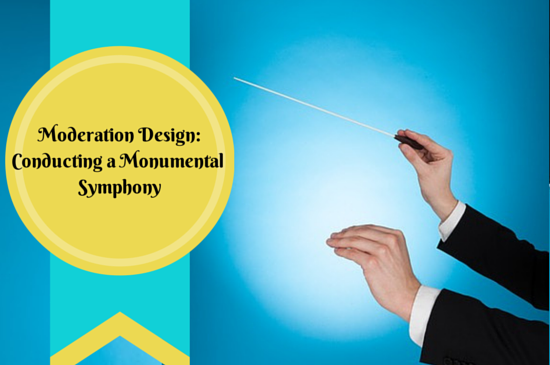The meeting-moderator is like the conductor of a symphony-orchestra: it is his job to execute the work of the composer to his best abilities and to elate the audience.
It is therefore inconceivable to image the conductor taking a look at the music for the first time, only just before he enters stage. You simply can’t imagine the director not thinking about his interpretation of a classical masterpiece.

Just as inconceivable it is having a meeting-moderator not preparing at all and solely trusting on his gut-feeling during the event. Yet, this is still very common.
The director delves into the music and tries to get a grip on the intention the composer put into it. Partly, these intensions are fixed by notation, but there’s also room for interpretation by the director.
Likewise, a meeting moderator should dig deeply into the Meeting Design and the underlying goal. A great and affective event is designed with great care and into great detail and you – the moderator – are the one to make it an effective meeting, by the way you execute this design.
Therefore, meeting moderators should develop a so-called Moderation Design for every meeting they conduct: a very well thought of design of tone, pace and style, to make the meeting reach its goals. Doing that is about transcending the regular buzzwords like engagement, experience and inspirational; it’s about conducting a monumental symphony.
Tone
Depending on the structure of the schedule, the moderator/facilitator chooses constantly changing ways of addressing the crowd. He might go for a sharp, maybe even bleak, opening, because the design asks first for people to be confronted with problems they deny. In other occasions, the meeting design dictates a more open and inviting tone-of-voice, for example when dealing with a touchy subject.
And this tone is subsequently changed over the course of the day: after sharpness, there may be room for reflection or even comforting. Or the tone could become more results-oriented and urging, once the invitational opening has had its effect. It’s all a matter of what your goal is.
Pace
A professional meeting design also looks into the attention span and the role of dynamics: the pace of the meeting. Time to quietly reflect at times for instance, is just as important as velocity. After flooding participants with information and/or inspiration, they need time to chew on it. You need to offer them space and time to process and translate what they’ve learned into their day-to-day reality it.
And after some ‘quiet time’ the next step is to translate the findings into concrete agreements or arrangements. In order to do so, you may need to raise the pace of the meeting again.
That constant and deliberate change in pace, keeps delegates perceptive and makes sure that every step of the way the meeting is effective. Of course tone and pace are closely related.
Style
The book ‘Into the heart of meetings’ (a standard work on Meeting Design by Mike v.d. Vijver and Eric de Groot, that I feel every meeting-pro should read!) uses the term ‘Facilitation style’: a very precise description of the way the meeting moderator (and all other concerned, for that matter) operates, put in just a few words.
It may be ‘entertaining’, or bombastic, dynamic, composed, observing, reflective, vibrating, scoring, playful… you could go on for ever. And the moderator could play the part of the journalist, coach, court jester, devils’ advocate, seducer, friend of the family, etc, etc.
Options are almost endless, so it’s a matter of putting a lot of time and attention in doing this right.
In Conclusion
A good and effective Moderation Design will engage everyone, even the introverts. It’s a process, starting with clear goals, a perfect Meeting Design and an extensive briefing of the moderator.
From that point onwards, it is something that needs fine tuning until the very last moment. That helps the moderator walk up on stage, knowing exactly what he’s going to do at what point in time, and why.
But pay attention: tone, pace and style must always remain flexible, as is the moderator. There is no meeting, without things turning out differently than planned and then you have to be able to adapt. Doing that ‘in a split second’ – since it will always happen in the middle of a meeting – takes a moderator who went through every detail of the meeting design.
I do not know of many meeting designers, let alone meeting owners, that take a look at moderation this closely. But then again, let’s be honest: I do not know of that many professional meeting moderators, that take their own moderation design this seriously.
Moderation design is a joint responsibility of meeting owner, meeting designer and moderator. Only if they are really prepared to invest and can trust each others expertise, the moderation design will truly fly.





